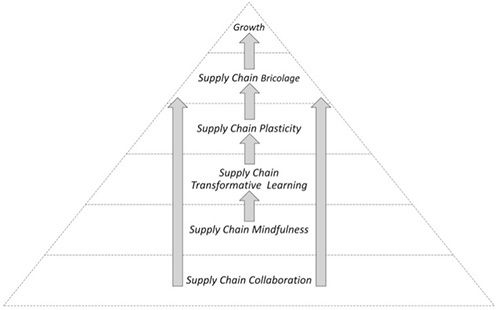

Bringing powerful connections to your supply chain pays—and it’s not as complicated as you might think. Reach out to an Elemica consultant and see how you can start transforming your supply chain today.
Insights from Arun Samuga, Chief Innovation Officer, Elemica
Increasing uncertainty, evolving customer requirements, silo'd people/process/tech and information blind spots are creating ever more fragile supply chains.
Awareness is often limited across systems and teams, information is not easily shared, and workflows and business processes are disconnected. This is compounded when trading partners are considered.
While leading manufacturers are correctly putting checks and balances in place to remove risk, forward thinking organizations like Dow, Mondelez and Honeywell are building their operations around the practice of learning and thriving through risk.
In a recent Reuters Supply Chain 2024 interview with Arun Samuga, a leading expert in end-to-end supply chain execution and orchestration, we gained valuable insights into how global process manufacturing leaders are activating systems to both reduce risk and improve agility.
Origins: Antifragility is a term coined by Nassim Taleb in his 2012 book, "Antifragile." It denotes what benefits from problems, usage, variation, and feedback. We love this article from Luca Dellanna on antifragile companies.
There are many aligned points of view on how to successfully adapt and capitalize on supply chain uncertainty. Key concepts our customers and strategic partners rely on include:
1. Supply chain collaboration: Collaboration with supply chain partners is foundational to building agility – and anti-fragility. Efficient, digital collaboration supports your organizations journey by providing process automation and access to the information needed across your supply chain's ecosystem.
“Our customers utilize real-time collaboration across their supply chain ecosystems which helps them increase agility. They can more effectively adapt business processes, planning strategies, customer experiences and logistics operations with the information made available through these digital connections,” said Samuga.
“As an example, by ensuring you have alternative sources of supply, you can optimize transportation in real-time in such a way that you can also look at your inventory position – so to say, draw from here or pull from there.”

2. Supply chain mindfulness: The consequences or changes induced by supply chain disruptions – from seemingly small delays in processes to large scale external events - may not always be known or understood. Without this view, teams may not be able to address, and then identify patterns of changes that would eventually lead to an opportunity.
Samuga emphasizes that "one of the required capabilities for building anti-fragile supply chains is contextual and complete supply chain visibility”, "visibility that spans processes and transactions across your internal operations as well as those with every trading partner – regardless of customer, supplier, logistics carrier and global location. End-to-end visibility that allows you to anticipate disruptions, learn and proactively adapt to risks.".
3.Transformative Learning Capabilities: Supply chain operations, equipped with transformative learning capabilities actively employ lessons learned to become stronger and to capitalize on the opportunities (Ramezani & Camarinha-Matos, 2020). Put another way, once you can see the issue, you can equip your operations with the tooling to learn, take corrective action, and adjust going forward.
Image Source: Building an antifragile supply chain: A capability blueprint for resilience and post-disruption growth
Ethan Nikookar, Mark Stevenson, Mohsen Varsei, First published: 02 January 2024
By harnessing the power of data analytics, organizations can drive efficiency, improve decision-making, and unlock new opportunities for agility.
“Having a data-first mindset, where data is used consistently to both streamline process automation and enable transformational learning is a key lever for our customers. As an example, one of our European customers has been able to build continual improvement cycles for new customer requirements as a result of the order-to-cash orchestration data analytics they now have across their entire global customer base”, stated Samuga.
“We often see teams optimizing within their business or functional silo's rather than optimizing for agility across departments, processes, and as importantly, with every trading partner”, said Samuga.
Successfully hitting financial and operational metrics requires organizations to account for the impact of their connected trading partners across internal functions and business units. “By not optimizing with a view that includes all trading partners, companies are actually multiplying their risk profile and adding more distance to the goals of anti-fragility.It is imperative the leadership prioritizes enterprise-wide optimization regardless of functional and regional differences.”
Building for an anti-fragile supply chain allows for better anticipation of risk and adaptation. This proactive risk management approach leads to reduced downtime and less impact from major supply chain disruptions.
By enabling real-time trading partner collaboration, prioritizing critical anti-fragile capabilities, harnessing the power of data analytics, and embracing continuous improvement, organizations are innovating for – and capitalizing on - the inevitable risks and disruptions to come. As Arun Samuga aptly puts it, "Innovation is the key to unlocking the full potential of the supply chain and driving sustainable value for businesses and their customers."
Thank you to Arun Samuga for his thoughtful insights.
To read the entire interview, please see the article
Contact Elemica to learn more about our customers, out platform, and how we can help you on your anti-fragile journey.